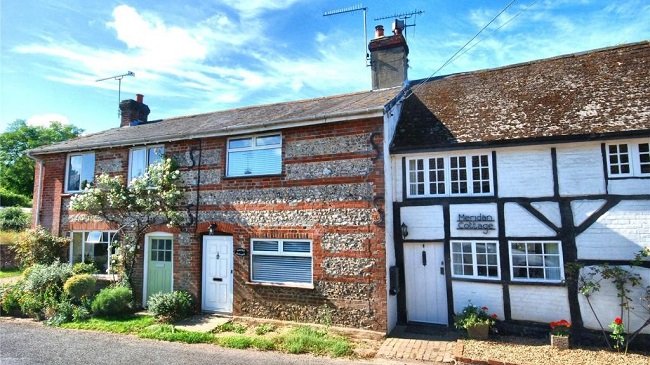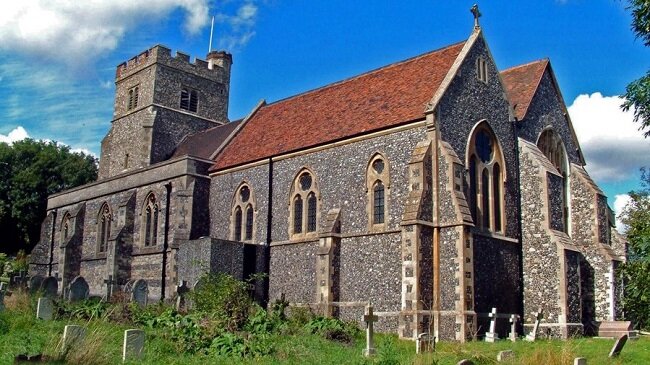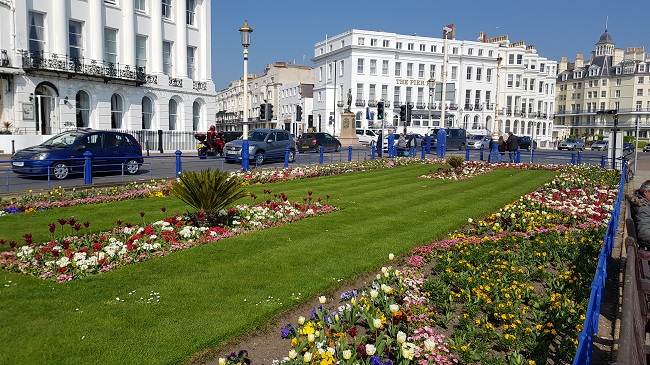Dymchurch, Old Romney and Hamstreet
As previously mentioned, the global pandemic and subsequent lockdown has put pay to our usual day trips and excursions. Mrs P and I had to wait six month before we could resume our travels. The last such journey was on June 9th when we visited Otford and Eynsford. However, at that point virtually nothing was open so we couldn’t visit any National Trust or English Heritage sites and there was nowhere where we could “stop for a spot of lunch”. However, two months later and many of the existing social restrictions have changed or been removed. As the weather was favourable today, we decided to take a journey out into Kent and visit some towns along the coast and nearby. The planned itinerary was to go to Dymchurch and Romney but as ever with travel arrangements, things can change. We ended up travelling to Old Romney and Hamstreet after Dymchurch.
It took about an hour to drive from the leafy suburb of Bexley to Dymchurch, a coastal town steeped in a history of smuggling and intrigue (Dr Syn is set in this area), known for its salt marshes and robust sea wall. The Romney, Hythe & Dymchurch railway is another major tourist attraction. I have memories of visiting this “quaint” coastal town as a child in the seventies. How times have changed. Let it suffice to say that the town centre is now devoid of any character and only offers the most basic tourist facilities; arcades, fairground rides, fast food etc. In recent years the sea wall has been reinforced and the sea facing side has extensive concrete ramparts. There are two beaches but they are heavily used and so the sea wall takes most of the overflow of tourists and daytrippers. If you wish to maintain any semblance of social distancing then Dymchurch is not the ideal environment. Parking is also problematic. The main car park in the town centre is extremely busy and poorly run. Payment is via RingGo (app or telephone) which doesn’t recognise its own site code.
So after a brief reconnoitre, we moved on from Dymchurch and followed the main road (A259) through New Romney which is similarly, overly commercial and lacking in personality. However, the route took us through Old Romney which afforded us an opportunity to stop and visit St Clements Church. The original place of worship was built approximately in the 8th century. An artificial mound was constructed to protect the site from flooding, which is common in the marsh area. Circa the 12th century the Saxon structure was replaced by an early Norman church, which was without a main aisle and featured a square-ended chancel. It was further enlarged in the 13th century. The present building, which is mostly of 13th century construction, has a nave and chancel, as well as north and south chapels. There is a small tower, with south-east and south-west buttresses, in the south-west corner. The porch is in the northern part of the church. The graveyard is still actively used. The filmmaker Derek Jarman is buried there.
Our next stop was the village of Hamstreet. Parish records show that there was a small Saxon settlement in the area as far back as the 11th century. The hamlet known as Ham remained undeveloped until the coming of the railway in 1853. It subsequently expanded and saw a growth in houses and cottages in the traditional Kentish weatherboard style. Today many of the traditional buildings still remain although some have been repurposed. The old village school is now an Indian restaurant. Hamstreet as it is now known, has two public woodlands surrounding the area which are the last remaining remnants of the ancient forest that once entirely covered the Weald of Kent. It is picturesque and offers plenty of local history as well as being part of the The Saxon Shore Way walk. It is ideal for rural rambles and sedate historical tourism. Both Mrs P hope to return again soon as we have taken a liking to the place.
































